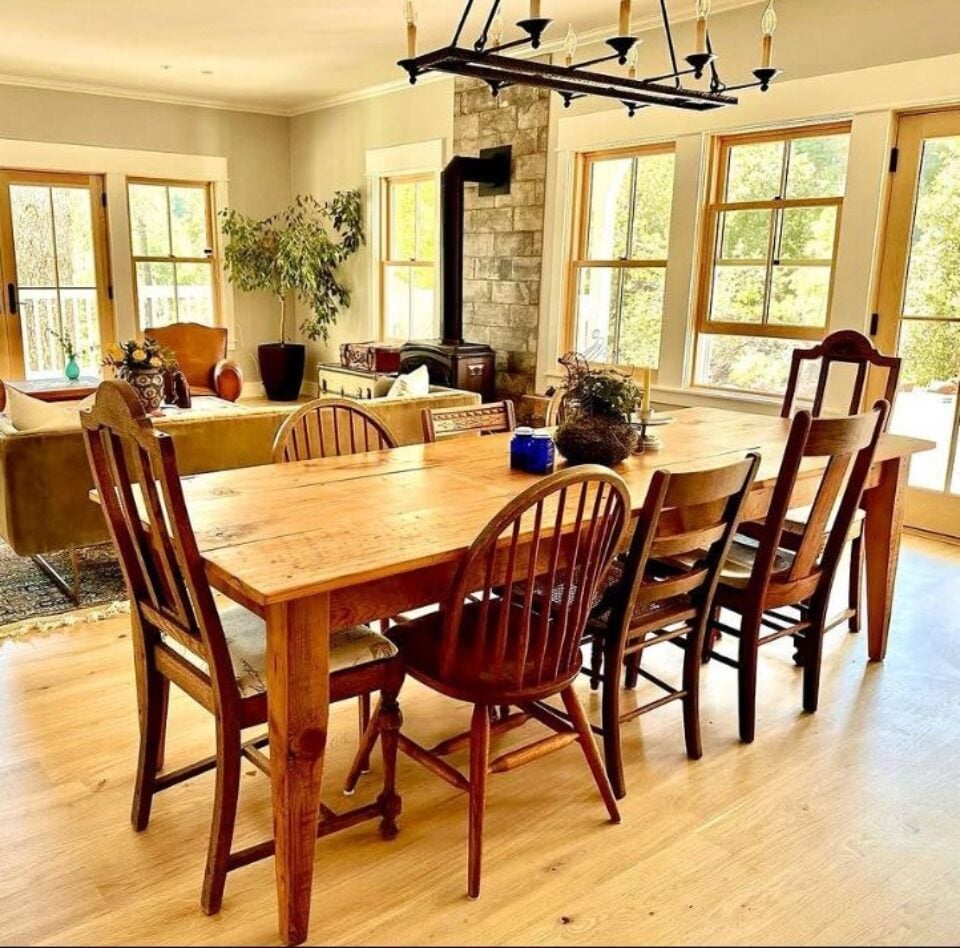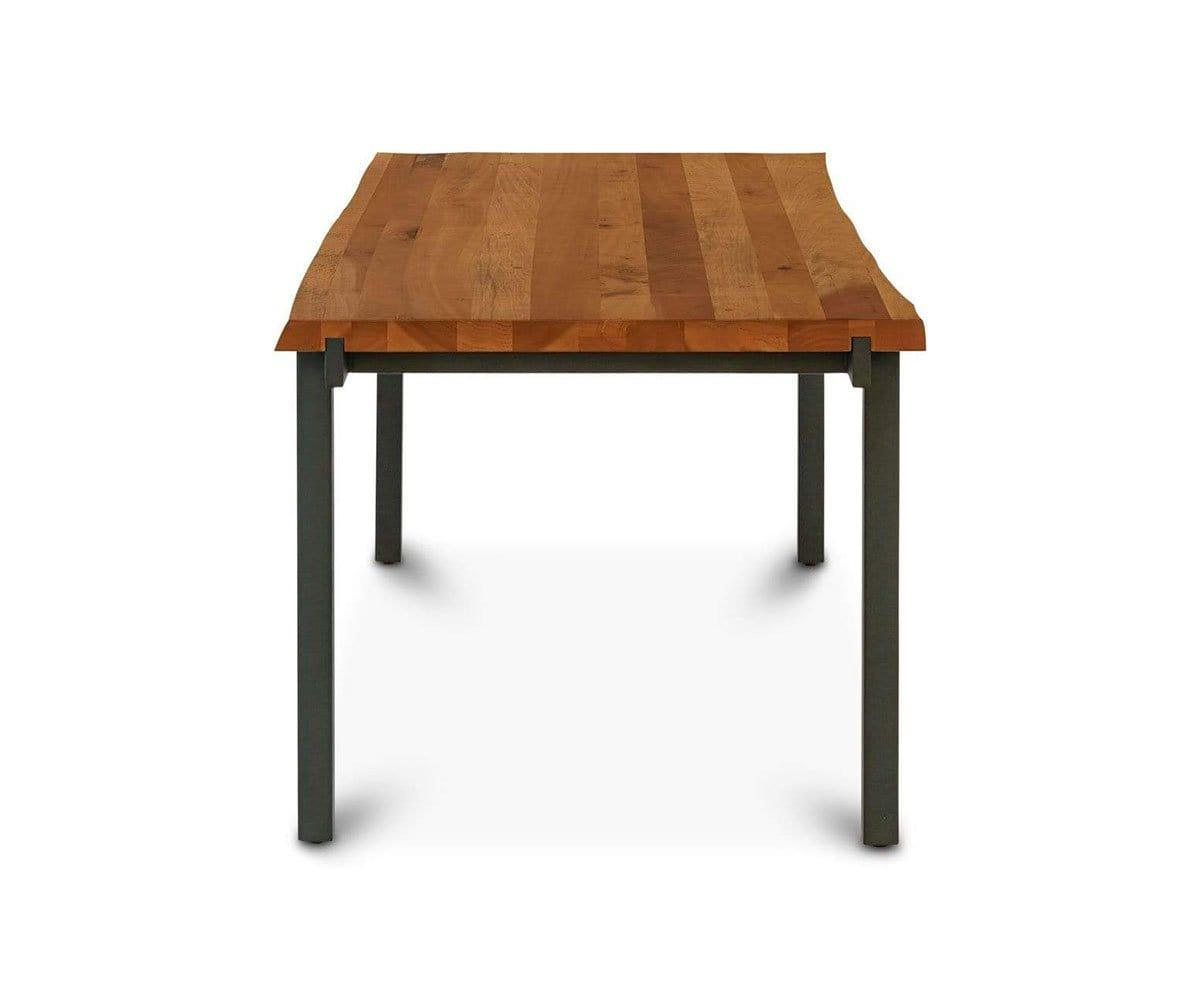Secret Aspects to Maintain in Mind for Eating Table Legs Wood Choices
When selecting wood for dining table legs, a number of critical elements necessitate careful consideration to ensure both performance and aesthetic allure. The selection of timber kind, characterized by its durability and one-of-a-kind grain patterns, plays an essential role in the total layout and longevity of the item.
Wood Types and Qualities
When picking wood for eating table legs, it is necessary to understand the one-of-a-kind features of various wood kinds. Different woods supply distinct benefits and disadvantages, influencing both the durability and aesthetic charm of the ended up item.
Hardwoods, such as maple, cherry, and oak, are generally favored for their toughness and resistance to wear. Oak, understood for its impressive durability, likewise includes a popular grain that can include personality to the table. Maple supplies a smooth surface and is much less vulnerable to bending, making it a dependable selection for functional furnishings. Cherry timber, with its abundant color that strengthens over time, offers a lavish look yet may require even more maintenance to avoid scratches.
On the various other hand, softwoods like want and fir are much more cost effective and much easier to deal with, yet they are less long lasting than hardwoods. Pine is light-weight and features a cozy, rustic look, making it a favored option for laid-back eating settings. It is much more prone to scrapes and dents.
Understanding these characteristics will certainly assist in making an informed decision to guarantee the legs of the table meet both functional and visual demands.
Grain Patterns and Appearance
Picking the right grain pattern can significantly improve the visual appeal of eating table legs. The wood's grain is not simply an aesthetic characteristic; it conveys an unique personality and beauty to each piece. Various timber species show unique grain patterns, ranging from the straight lines of maple to the intricate swirls of oak and the striking figure of walnut. These patterns can stimulate different designs, from rustic to contemporary, making it necessary to choose a grain that aligns with the overall style of the eating room.
Furthermore, the alignment and range of the grain can influence the viewed size and beauty of the table. For instance, bigger, more noticable grains may lend a strong, dramatic effect, while finer, subtler grains can create a refined, underrated appearance. Additionally, the finishing process can further enhance these patterns, highlighting the all-natural appeal of the wood and drawing out abundant colors.
Ultimately, the selection of grain pattern should balance with other style components, such as the table top and surrounding furniture, making certain a cohesive aesthetic that elevates the dining experience. Thoughtful selection of timber grain not just adds to the table's elegance however additionally mirrors the owner's taste and design.
Resilience and Stamina
The toughness and stamina of eating table legs are extremely important considerations for guaranteeing long life and stability in any type of eating space. Choosing the best wood is vital, as different types display varying degrees of durability.

Eventually, purchasing high-grade timber and robust building techniques will certainly generate a table that stands the test of time, while providing a dependable structure for many dishes shared among family and buddies. Focusing on sturdiness and toughness ensures that your table remains functional and aesthetically pleasing for years ahead.
Maintenance and Care
Correct upkeep and care are vital for protecting the longevity and stamina of table legs made from wood. Regular cleaning is important; making use of a soft, damp towel makes sure that dust and particles do not build up, which can bring about scratches and monotony. It is suggested to stay clear of harsh chemicals or rough materials that might damage the finish.
Additionally, using an ideal timber polish or wax occasionally can help preserve the shine and protect the timber from wetness and spills. Nevertheless, it is essential to follow the manufacturer's recommendations regarding the kind of product to utilize, as particular surfaces may react adversely to particular chemicals.
Humidity and temperature variations can also influence wood table legs, causing them to warp or split. blog It's ideal to put the table far from direct sunlight and heat sources. If the table legs have any type of scrapes or dents, More about the author attending to these without delay can protect against additional damage.
Lastly, occasionally checking the joints and screws for rigidity is crucial to preserve structural stability (Dining Table Legs Wood). By adhering to these maintenance techniques, home owners can ensure their wooden dining table legs continue to be appealing and practical for years to find
Environmental Considerations
When selecting wood for dining table legs, it's necessary to take ecological factors to consider right into account. The sourcing and sustainability of timber are extremely important in minimizing eco-friendly influence. Opting for wood from qualified resources, such as those backed by the Forest Stewardship Council (FSC), guarantees that the wood is gathered responsibly, advertising woodland preservation and biodiversity.

Additionally, local sourcing of timber minimizes transport emissions, sustaining regional economic situations while reducing environmental effect. It is also suggested to be knowledgeable about the wood's therapy and completing processes, as particular chemicals can be dangerous to both human health and wellness and the atmosphere. By focusing on sustainable timber options, customers can contribute to environmental conservation while enjoying the resilience and charm of their dining table legs.
Verdict
In final thought, picking timber for eating table legs requires mindful consideration of different variables, including timber kinds, grain patterns, and sturdiness. Upkeep demands and environmental sustainability further impact timber options, highlighting the value of sourcing from licensed or redeemed materials.
When picking timber for dining table legs, numerous essential aspects call for mindful factor to consider to make sure both capability and visual allure.Proper upkeep and treatment are essential for preserving the sturdiness and toughness of this eating table legs made from timber.When choosing wood for eating table legs, it's important to take ecological factors to consider right into account. By focusing on sustainable timber selections, customers can add to ecological conservation while enjoying the longevity and charm of their eating table legs.
In conclusion, choosing timber for eating table legs requires mindful factor to consider of various variables, including wood kinds, grain patterns, and longevity. Dining Table Legs Wood.